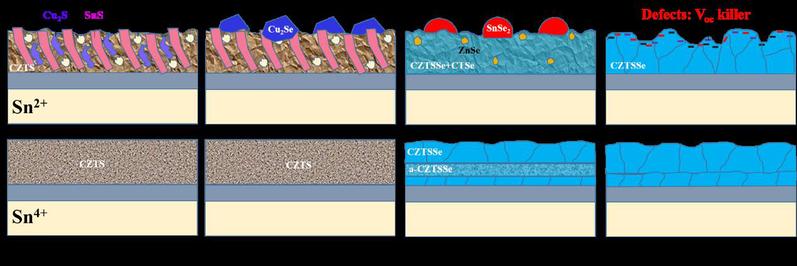The biggest challenge faced by kesterite solar cell is the high voltage deficit of open-circuit. However, the key factors restricting open-circuit voltage and their action mechanism have not been determined. Based on the previous work, the research group IAM of Professor Xin Hao from the School of Materials Science and Engineering of NJUPT studied the crystal grain growth process of two kinds of precursor films and its effects on the material and cell, finding out the cause of the open-circuit voltage deficit and its mechanism. The research paper Identifying the origin of the VOC deficit of kesterite solar cells induced by the two grain growth mechanisms Sn2+ and Sn4+ precursors in DMSO solution was published in the International Journal of Energy & Environmental Science. The first author is Gong Yuancai, a PhD candidate from the School of Materials Science and Engineering, and Zhang Yifan, who has received his master's degree. The corresponding authors are Professor Xin Hao and Dr. Yan Weibo.
The results of the study demonstrate the mechanism of action of voltage deficit in kesterite solar cells, which provides new research thread for the development in this field. The high efficiency and low voltage deficit of Sn4+ processed CZTSSe solar cells highlight that direct phase transformation grain growth is a new strategy to fabricate high quality kesterite absorbers, which can also be applied to other multi-element thin film semiconducting materials.

Diagram of grain growth process of two precursor films with different components prepared by DMSO solution



